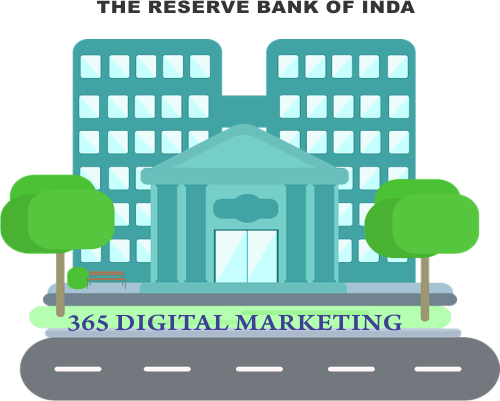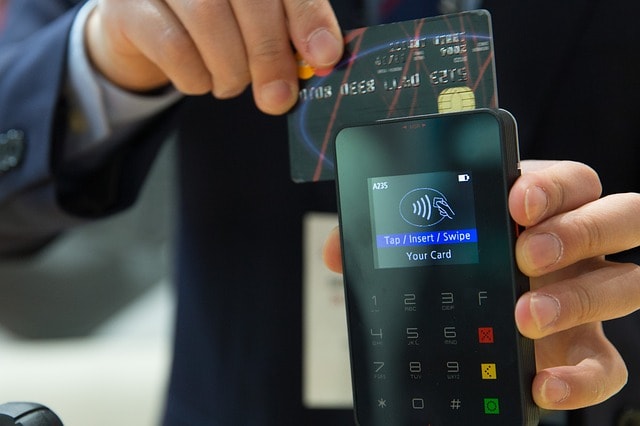Payment banks
After the demonetization of Rs.500 and Rs.1000 notes since November 2016, digital payments or you know them by name of e-payments, electronic wallet payment, mobile payments PPI payments the concept of payments banks has gone viral.
It has change the whole ecosystem of the Indian Banking sector and with the entry of new players termed as Payments Banks or Small Banks in India.
Payments bank is a new model of banks in India introduced by the Reserve Bank of India (RBI).

As a digital marketer you should be aware of this huge and growing market segment and know all about payment banks. The scope of digital marketing will change not only for full-fledged banks but also for other players such as e-commerce companies, M-Wallet companies.
The job opportunities have opened up in the best mobile wallet in India, more challenges are now faced by online marketers for formulating new sales & marketing strategy for their organization.
As an online marketer, you have to be prepared and ready for this new internet marketing challenge and adapt to it as early as possible.
In this new series of blog post, we shall dive deep into this interesting and growing sector of payments banks in India and alnalyze digital wallet India Government policy, mobile payments, prepaid wallets etc. and how it can change the game in the banking sector and online marketing strategies across all industry sectors.

So, now let’s start.
What does a common man understand about Payments Banks?
Are they similar to my neighborhood bank?
Is there any risk involved?
How does Payments Bank works?
What are payment banks business model?
Do I really need a Payments bank account?
All these and many other questions come to the mind of all of us regarding digital payments banks.
In this blog post, we shall start with the basics of payment banks, online wallet, mobile payment, debit card wallet and other similar jargons surfacing daily in newspapers, televisions and social media sites.
“What are Payments Bank?”
Payment banks are similar to our other nationalized banks (State Bank of India, Union Bank of India, Bank of India and others) and private sector banks (HDFC Bank, ICICI Bank, Kotak Mahindra Bank, Standard Chartered Bank and others).
However, they are formed and function as per stringent rules and regulations directed by our apex bank The Reserve Bank of India guidelines (remember they keep on changing as per their notifications via press releases)
The main reason or objective of introduction of payments banks as per the Reserve Bank of India Circular was:
There is a need for transactions and savings accounts for the underserved in the population.
Also, remittances have both macroeconomic benefits for the region receiving them as well as microeconomic benefits to the recipients.
Higher transaction costs of making remittances diminish these benefits.
“Therefore, the primary objective of setting up of payments banks will be to further financial inclusion by providing (i) small savings accounts and (ii) payments / remittance services to migrant labour workforce, low-income households, small businesses, other unorganised sector entities and other users, by enabling high volume-low value transactions in deposits and payments / remittance services in a secured technology-driven environment.”
“What Payment Banks they are permitted or allowed to do?”
The payments bank will be set up as a differentiated bank and shall confine its activities to further the objectives for which it is set up.
The payments bank would be permitted to set up its own outlets such as branches, Automated Teller Machines (ATMs), Business Correspondents (BCs), etc.
Issue of ATM / Debit cards but not Credit cards

They can undertake other non-risk sharing simple financial services activities, not requiring any commitment of their own funds, such as the distribution of mutual fund units, pension products etc only after approval for the Reserve Bank of India and after complying other terms and conditions of the sectoral regulator of those products.
They can undertake utility bill payments on behalf of their customers such as electricity, gas, DishTV cable etc.
To undertake only certain restricted activities permitted to banks under the Banking Regulation Act, 1949
Accept deposits up to Rs.1,00,000 per individual customer
Provide payments and remittance services and demand deposit products to small businesses and low-income households
What are the Limitations or restriction of Payments Banks?
They have to mandatorily use the words “Payments Bank” in its name in order to differentiate it from other banks
These banks operate under strict guideline from Reserve Bank of India. Some of them are as follows:
These banks can accept a restricted deposit, which is currently limited to ₹1 lakh per customer and may be increased further.
They cannot issue loans and credit cards.
Both current account and savings accounts can be operated by such banks.
Payments banks can issue services like ATM cards, debit cards, net banking and mobile banking.
The payments bank cannot set up subsidiaries to undertake non-banking financial services activities
The payments bank cannot undertake lending activities
They are required to invest minimum 75 per cent of its “demand deposit balances” in Government securities/Treasury Bills with maturity up to one year that are recognized by RBI as eligible securities for maintenance of Statutory Liquidity Ratio (SLR)
Payments banks need to hold maximum 25 per cent in current and time / fixed deposits with other scheduled commercial banks for operational purposes and liquidity management
The “balances outstanding under the PPIs issued” by the payments bank should be flexibly invested / deployed between SLR eligible Government securities/Treasury Bills and bank deposits (both demand and time) in such a manner that it is able to comply with the requirements of CRR and SLR on its “overall outside demand and time liabilities” including its deposit balances and outstanding balances in PPIs issued
The other financial and non-financial services activities of the promoters, if any, then they should be kept distinctly ring-fenced and not commingled with the banking and financial services business of the payments bank.
The payments bank shall operate in remote areas mostly through Business Correspondents (BCs), ATMs and other networks.
Mandatory requirement of opening at least 25% of branches in unbanked rural centers (population up to 9,999 as per the latest census), is not stipulated for them.
They will be required to have at least 25 per cent of physical access points including BCs in rural centers.
A controlling office for a cluster of access points should also be established for control over various outlets and customer grievance redressal.
“What is the minimum capital or paid-up equity capital of payments Banks?”
The minimum paid-up equity capital of the payments bank shall be Rs. 100 crore
“What is the promoters contribution or maximum shareholding limit of promoters?”
As per the RBI, no maximum shareholding limit for promoters is prescribed. However, the promoters of the payments bank should hold at least 40 per cent of its paid-up equity capital for the first five years from the commencement of its business.
“What are the foreign shareholding limit in Payments Banks in India?”
The foreign shareholding in the payments bank would be as per the Foreign Direct Investment (FDI) policy for private sector banks as amended from time to time.
As per the current FDI policy, the aggregate foreign investment in a private sector bank from all sources will be allowed up to a maximum of 74 per cent of the paid-up capital of the bank (automatic up to 49% and approval route beyond 49 per cent to 74 per cent).
At all times, at least 26 per cent of the paid-up capital will have to be held by residents.
Let us have a look at some interesting data report published by Reserve Bank of India in Feb 2017:

As the data report, we can clearly see the big shift in cashless transactions since post demonetization of two major Indian currencies in November 2016.
Payments by cards increased from Rs.1823.25 Billion in Nov 2016 to Rs.2335.10 Billion in Jan 2017
Usage of cards at Points of Sale System (POS) increased from Rs.265.69 Billion in Nov 2016 to Rs.327.08 Billion in Jan 2017
Let us to a little back in November 2016, at this time the Reserve Bank of India (RBI), gave in-principle approval to 11 out 41 applicants for the payments banks.
Those prominent ones who made the list were or the best digital wallet
These are also List of top e wallets in India to Make Online Payments
- Airtel
- Reliance Industries
- Aditya Birla Nuvo
- Vodafone
- Department of Posts
- Cholamandalam Distribution Services
- Tech Mahindra
- National Securities Depository Limited (NSDL)
- Fino PayTech
- Sun Pharma’s Dilip Shantilal Shanghvi
- Paytm’s Vijay Shekhar Sharma.
The in-principle approval was valid for a period 18 months. In this period the applicants have to fulfill the terms and conditions laid down by the apex bank RBI.
List of prominent Payments Banks in India are:
- Airtel Money
- India Post Payment Banks
- Axis Bank Lime
- BHIM App
- Chillr
- Citrus Pay
- Freecharge
- FTcash
- HDFC PayZapp
- ICICI Pockets
- Itzcash
- Jio Money
- Mobikwik
- mRupee
- Oxigen Wallet
- Paytm
- PhonePe
- SBI Buddy
- Trupay
- Vodafone M-Pesa
- Samsung Pay app
- Kotak Mahindra’s 811 digital account
Samsung Pay app
Samsung Pay is the latest entrant in India in the payment by app competition. At present only Citibank and Paytm is supporting it.
Samsung Pay is available only to new Samsung A series phone such as Galaxy S6s or S7s.
Kotak Mahindra’s 811 bank account
Kotak Mahindra on 30/03/2017 unveiled its 811 digital account it can be used for purchase, shopping making utility payments investing in IPO’S, transferring money.
Unlike other payment banks accounts, 811 customers can use the 811 account not only to transact, but also avail other services like loans and manage investments.
The best part is it can be opened in just 5 minutes with your Aadhar card or PAN card verification.
Well, this can change the whole ecosystem for payment banks and they need to rethink their future strategy.
The above-mentioned brands have their own advantages and limitations which we shall discuss in coming blog posts.
So, okay above were the information from the view of understanding the basic ecosystem of Payments Banks.
After reading the above information you must have by now understood basic jargons and concept of payments banks and how they are formed? How payments banks work? Etc.
Now, we shall see facts from the point of view of a customer or account holder of payments banks.
First, the basic thing we need to understand is:
“What are Prepaid Instruments?”
After the passing of Payment and Settlement Systems, Act 2007, banks and non-bank entities have been issuing pre-paid payment instruments in India after obtaining necessary approval/authorization from Reserve Bank of India and operating within the guidelines issued by Reserve Bank of India in this regard.
As per the RBI notification dated July 01, 2014
Pre-paid payment instruments are payment instruments that facilitate the purchase of goods and services, including funds transfer, against the value stored on such instruments.
The value stored on such instruments represents the value paid for by the holders by cash, by debit to a bank account, or by credit card.
The pre-paid instruments can be issued as smart cards, magnetic stripe cards, internet accounts, internet wallets, mobile accounts, mobile wallets, paper vouchers, wallet card and any such instrument which can be used to access the pre-paid amount, collectively called Prepaid Payment Instruments.
In simple words, an amount is transferred from your bank account to your digital wallet.
The transfer is done by linking your registered mobile number of your bank to the digital wallet.
There is a cap on maximum transfer or deposit into these pre-paid instruments or online wallets Rs.50,000 at present.
You don’t earn any interest on your deposit (as of now), RBI may bring out new circular or guidelines in future.
Your Payment bank India are strictly regulated as per the norms directed by RBI under Payments and Settlement Act of 2007.
You cannot withdraw cash as we do by our normal ATM Debit or Credit cards.
You have to use it or spent it for your utility payments and at Point of Sales (POS) at shops.
There is a transaction fee levied by payment banks, every time you use their services to make payments or purchases.
Though initially to attract new member for registration the transaction fees can be waived by them as done by PayTM.
The payment banks in India function under stringent rules and regulations regularly updated by Reserve Bank of India under Banking Regulations Act, 1949.
So, How I am affected by these Payments Banks?
“What are the benefits of Payments Banks to the common man?”
There is no significant difference to common man if compared with our traditional bank.
But yes it has given us more options and choices.
Prepaid payments instruments are handy from a customer point of view. For example, the biggest benefit is, as we customers today are well versed with the usage of smartphones.
Shopping and other routine utility payments can be done with ease at the point of sale (POS) outlets.
There is no need to swipe or use your debit or credit cards
Discounts or gift vouchers are offered in the form for promotional activities by various electronic wallet India, prepaid wallet or mobile wallet companies.

At the end, you save money by earning discounts on your purchases and utility payments
Conclusion
The demonetization and government policies in favor of Payment Banks have changed the way we do our financial transactions such as payments, utility payment etc.
So, friends, these were some brief information on the status of Payment Banks in India.
You can expect new updates in my coming blog posts.
I have also received a request to write on Unified Payment Interface System (UPI) in India. I will certainly write a blog post to update current scenario on UPI payments systems in Inda.
Do you use any payment banks services?
What has been your experience with them?
Are you happy with their services?
Please share your experiences by commenting below in this post and if you find information in this blog post useful, do share it with your social networks.
If you want further details or discuss you / internet marketing strategy, please feel free to call us at +91-9699938013 or write us at contact@365digitalmarketing.in.
365 digital marketing is an online marketing agency offering digital marketing services such as email marketing, content writing, social media marketing, Google Adwords, Facebook Adverts, Search Engine Optimization (SEO) etc in India (Mumbai, Navi Mumbai, Thane Mira Road, Vasai-Virar, Pune and other parts of India

